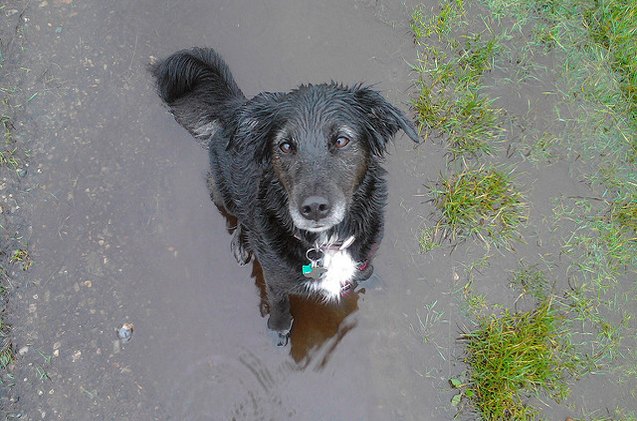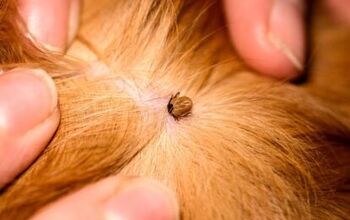What Should You Know About Pythiosis in Dogs?


Most dogs love water – they can’t go past a puddle with jumping in it, splashing, and licking up the water. It’s cute to watch, but he could be at risk for a serious fungal infection called pythiosis that, if left untreated, can become fatal. To protect your dog against this dangerous disease, take a moment to learn the basics about pythiosis in dogs and how your canine might get it.
Related: What are Hot Spots on Dogs?
What is Pythiosis in Dogs?
Pythiosis is a fungal infection that can affect both dogs and cats. This infection is caused by a specific type of aquatic mold called Pythium insidiosum which can be found in stagnant water, especially in the southern United States as well as the Gulf Coast area. Your dog is highly unlikely to contract pythiosis by swimming in a pool, stream, or river, but standing bodies of water that have gone stagnant are the ideal conditions for this type of fungus. In most cases, the mold spores enter the dog’s body through the nose or esophagus, though they can also enter through open wounds and broken skin. Once the spores are inside the dog’s body they tend to settle in the lungs, brain, sinuses, skin, or gastrointestinal tract where they develop into palpable masses.
Related: Stomach Churning Effects Of Salmonella Poisoning In Dogs
Throughout the world, the gastrointestinal form of pythiosis is the most common and it may cause symptoms such as diarrhea, vomiting, and unexplained weight loss. It is also common for infected dogs to develop palpable masses in the abdomen. The subcutaneous form of the disease which develops under the skin is one of the less common forms of the disease but it still happens. Dogs with this form of pythiosis usually develop lesions on the head and legs as well as the area at the base of the tail. These lesions can become very itchy and they are often mistaken for granulomas or other skin growths. Eventually, if left untreated, these lesions can lead to skin and tissue death, called necrosis.
Methods for Diagnosis and Treatment Options
The first thing your veterinarian will do when diagnosing pythiosis is a complete physical exam. Be sure to tell your vet about all of your dog’s symptoms and be as specific as you can about when they first started. In addition to a physical exam, your vet will likely perform several laboratory tests including a complete blood count (CBC), a chemical blood profile, an electrolyte panel, and a urinalysis. Depending on the results of these tests, your vet may recommend a radiograph and/or a biopsy of any physical masses. As far as treatment goes, surgery may be required to remove the affected tissues and laser treatment may be required afterward to kill any remaining fungal filaments. Even after surgery, many dogs require medical treatment for six months afterward. As long as the disease is caught early and treatment is started right away, the prognosis is generally good.
As you can see, pythiosis is a serious condition. Although it is not particularly common, you should always be careful when letting your dog swim or play in bodies of stagnant water. If your dog develops any symptoms which could be related to pythiosis, take him to the vet immediately.

Kate Barrington is the loving owner of two cats (Bagel and Munchkin) and a noisy herd of guinea pigs. Having grown up with golden retrievers, Kate has a great deal of experience with dogs but labels herself a lover of all pets. Having received a Bachelor's degree in English, Kate has combined her love for pets and her passion for writing to create her own freelance writing business, specializing in the pet niche.
More by Kate Barrington






















